Abstract
1. Intracellular recordings were obtained from ganglion cells in the guinea-pig inferior mesenteric ganglion (IMG) with a segment of the distal colon attached to the lumbar colonic nerves.
2. Continuous electrical activity consisting of excitatory synaptic potentials and action potentials was recorded from ganglion cells in all regions of the IMG.
3. The `spontaneous' synaptic potentials were indistinguishable from those elicited by submaximal stimulation of any of the nerve trunks connected to the IMG.
4. The excitatory activity was irreversibly abolished when the lumbar colonic nerves were cut and reversibly abolished when tetrodotoxin (5 × 10-7 g/ml.) was added to the colon side of a two-compartment organ bath.
5. Addition of dihydro-β-erythroidine (5 × 10-6 g/ml.) to the ganglion side of the bath abolished the synaptic activity of colonic origin and the synaptic responses to stimulation of any of the nerve trunks connected to the IMG.
6. Addition of dihydro-β-erythroidine (1 × 10-5 g/ml.) to the colon side of the bath markedly depressed the synaptic input of colonic origin but had no effect on synaptic responses produced by preganglionic nerve stimulation.
7. Distension of the colonic segment and the application of 5-HT (1 × 10-5 g/ml.) to the mucosal surface of the colon increased the frequency of synaptic input.
8. The synaptic input from the colon was transiently blocked following repetitive stimulation of any of the nerve trunks connected to the IMG. The discharge of miniature synaptic potentials was unaffected.
9. Addition of noradrenaline (1 × 10-7 to 1 × 10-6 g/ml.) to the colon side of the bath reduced, and in some cases completely abolished, the synaptic input to the IMG. Phentolamine (1 × 10-6 g/ml.), when added to the colon side of the bath, blocked the effect of noradrenaline and the transient inhibition following repetitive nerve stimulation.
10. Addition of noradrenaline (1 × 10-4 g/ml.) to the ganglion side of the bath reduced but never abolished the amplitude of the synaptic potentials of colonic origin.
11. It was concluded that in the guinea-pig, the IMG is involved in a peripheral reflex whose afferent limit of this reflex consists of the axons of cholinergic neurones within the wall of the colon. Many of these neurones are driven either directly or indirectly by cholinergic synapses. The efferent noradrenergic neurones of the IMG function as a group of inhibitory neurones which depress the activity of the excitatory neurones of the colon which are driving them.
Full text
PDF


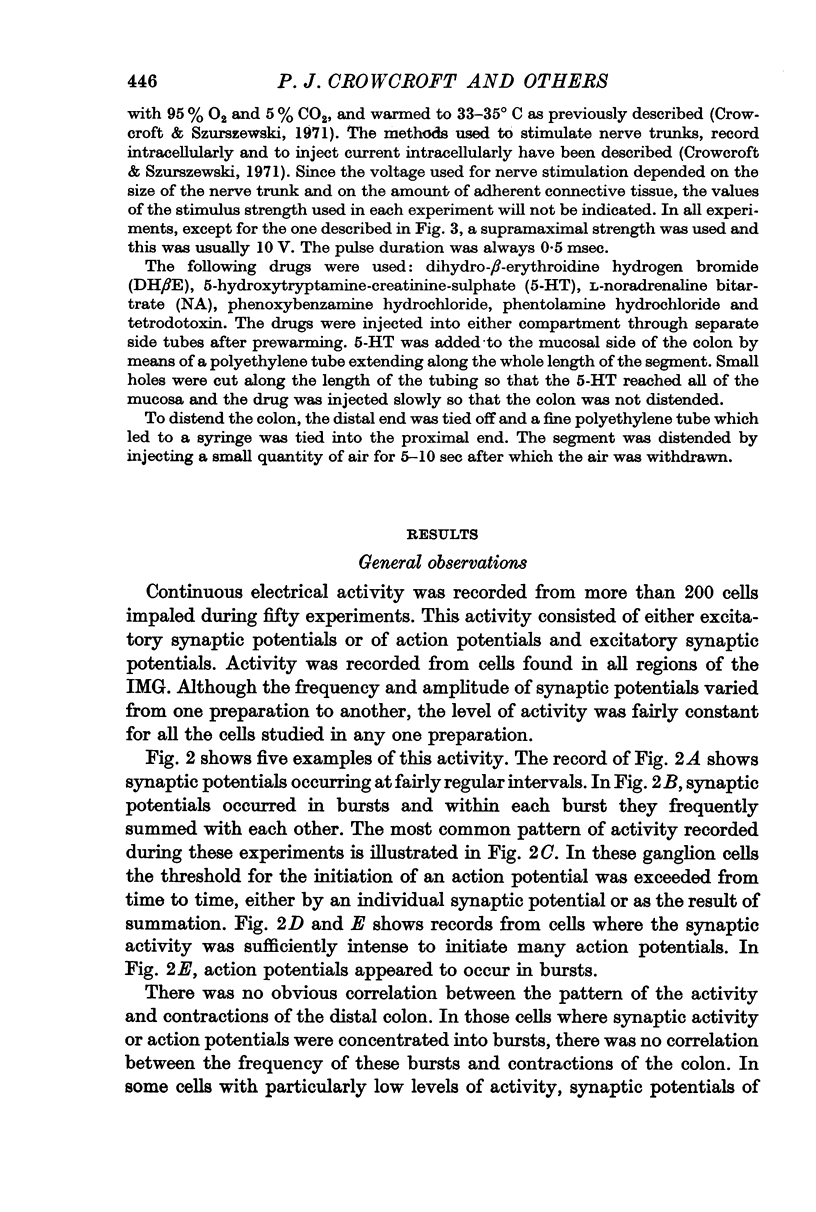
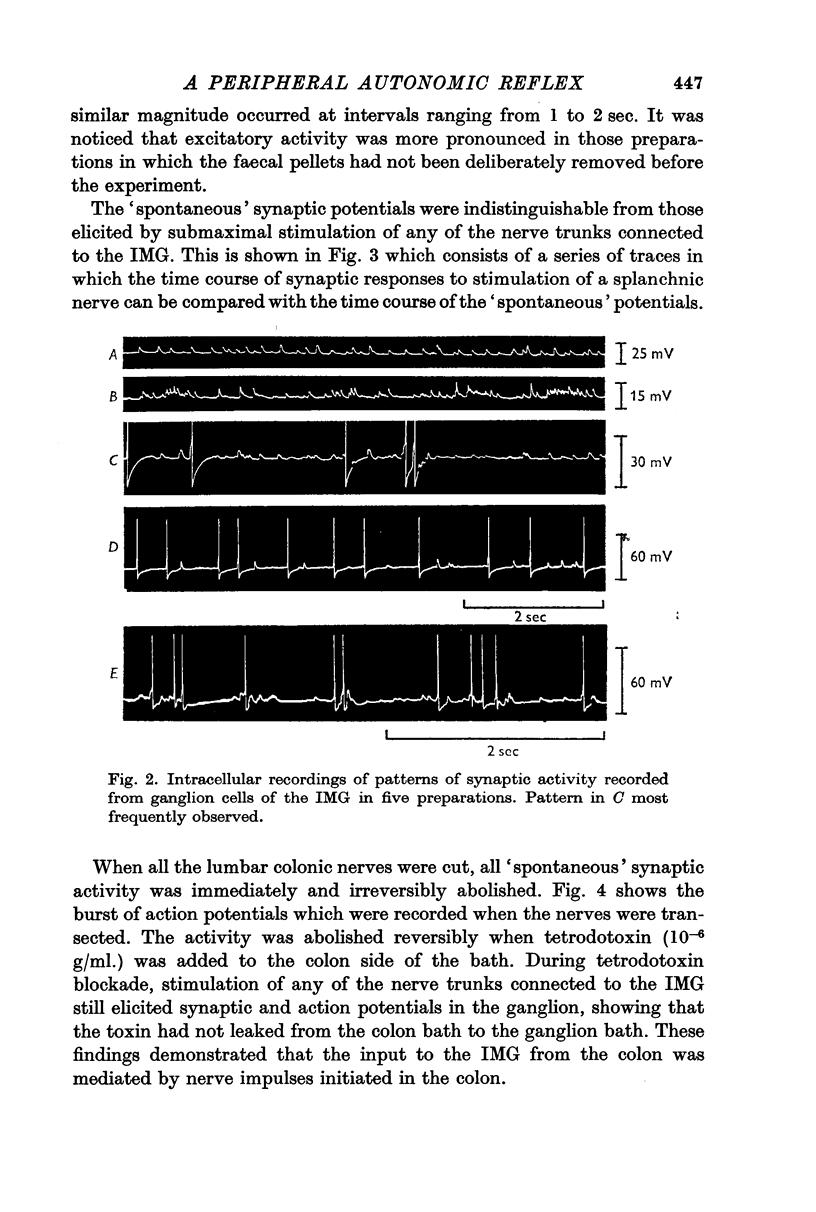



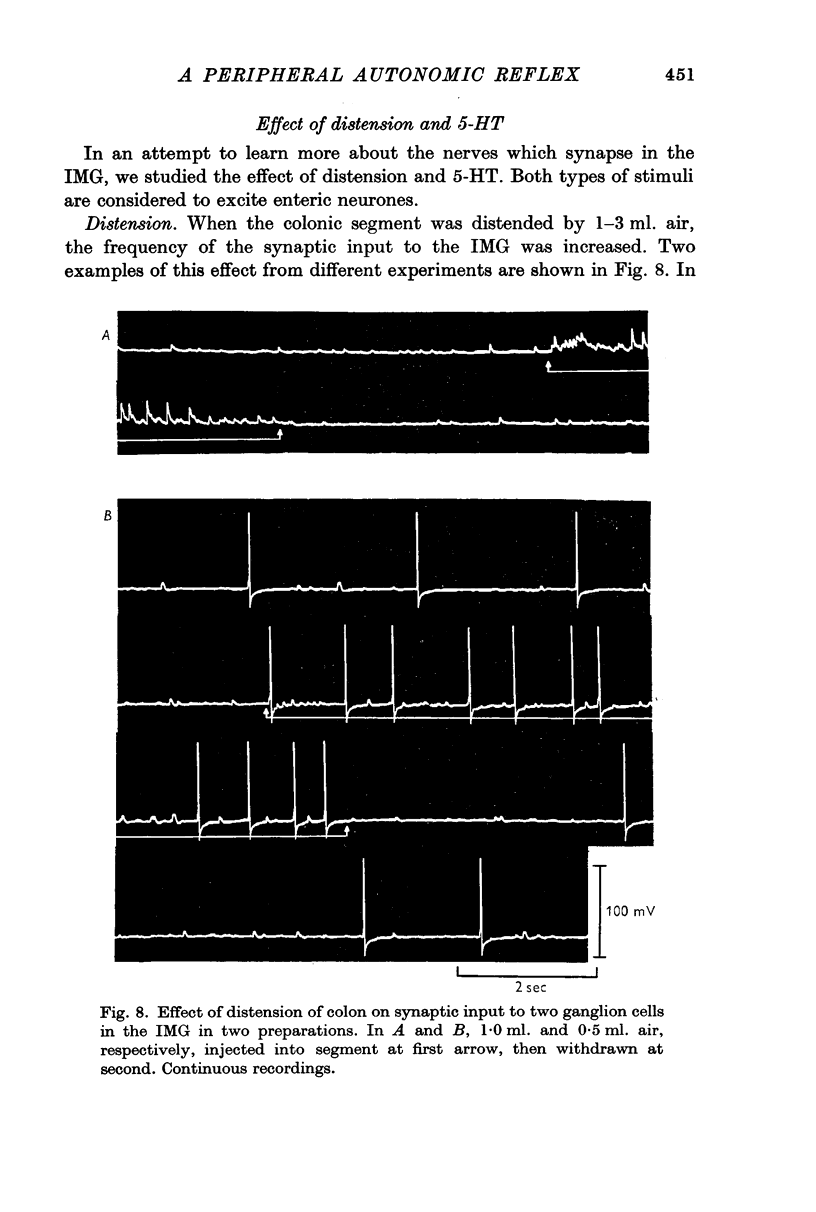

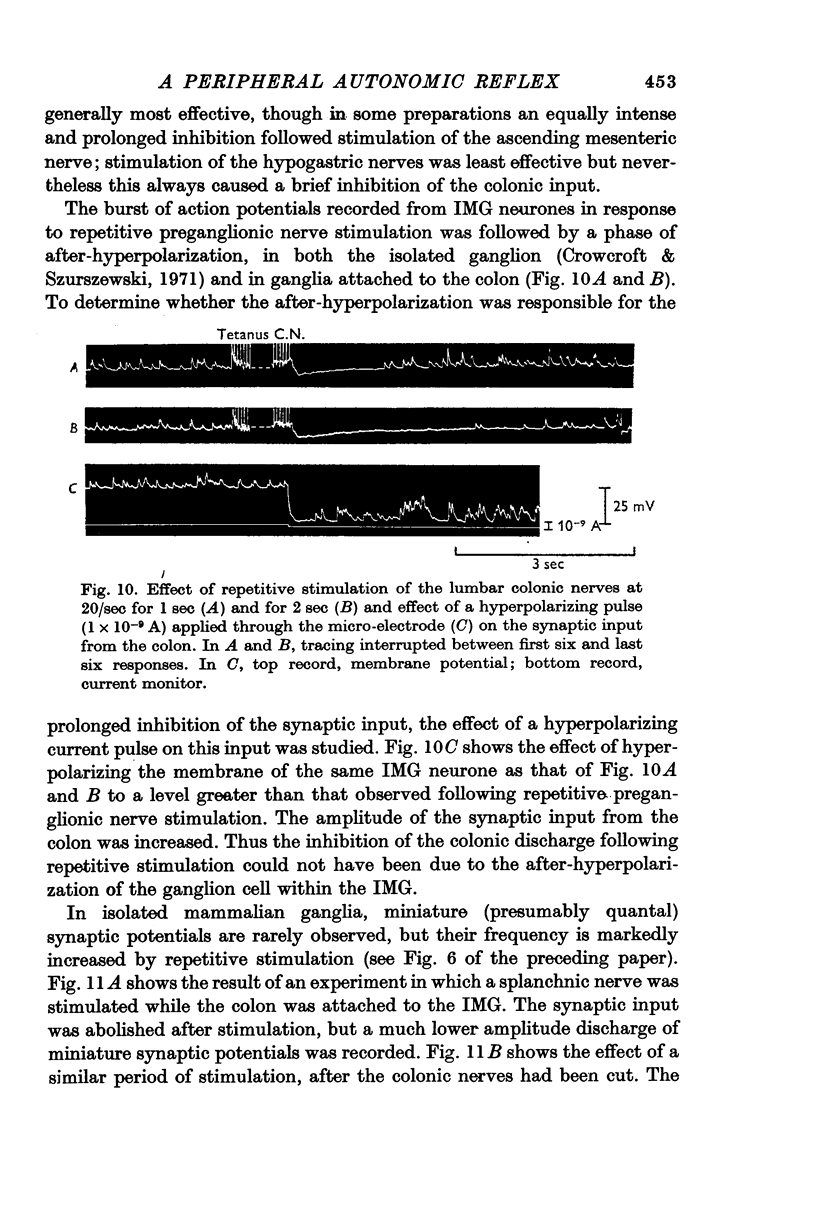
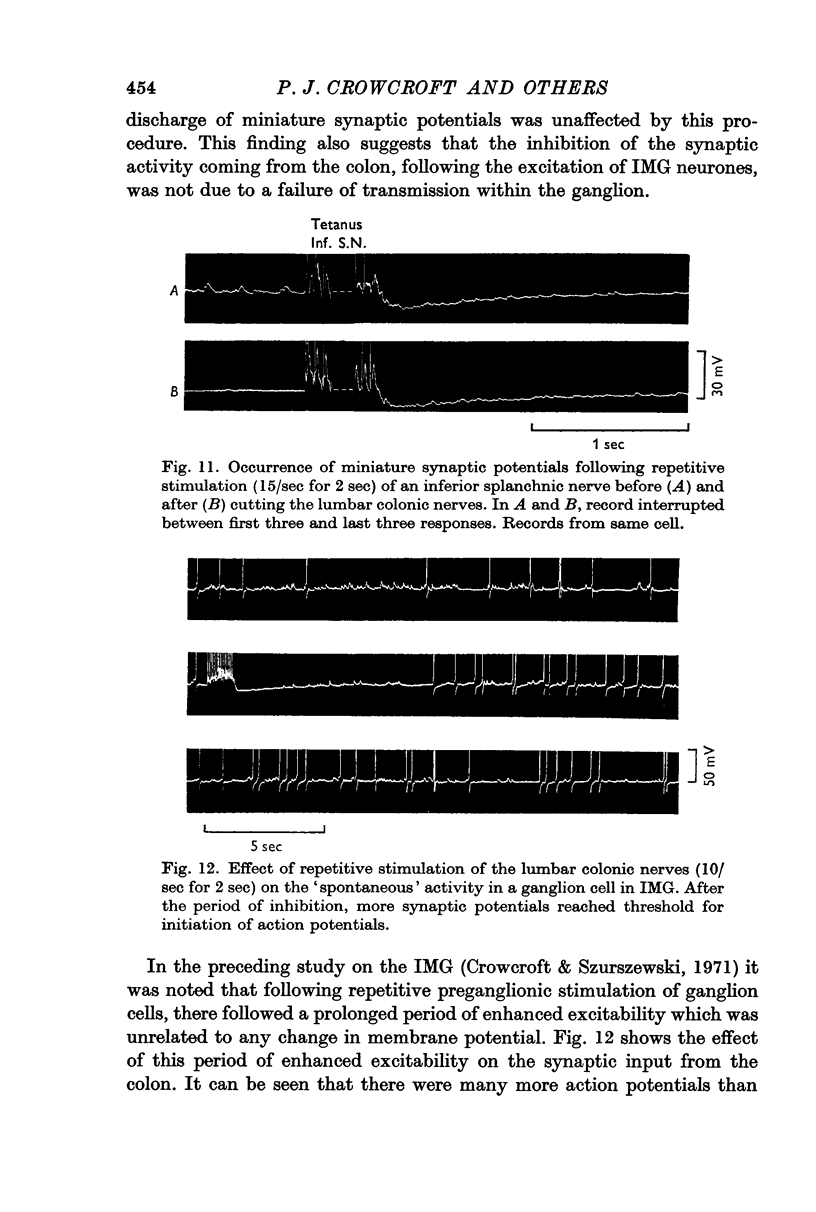

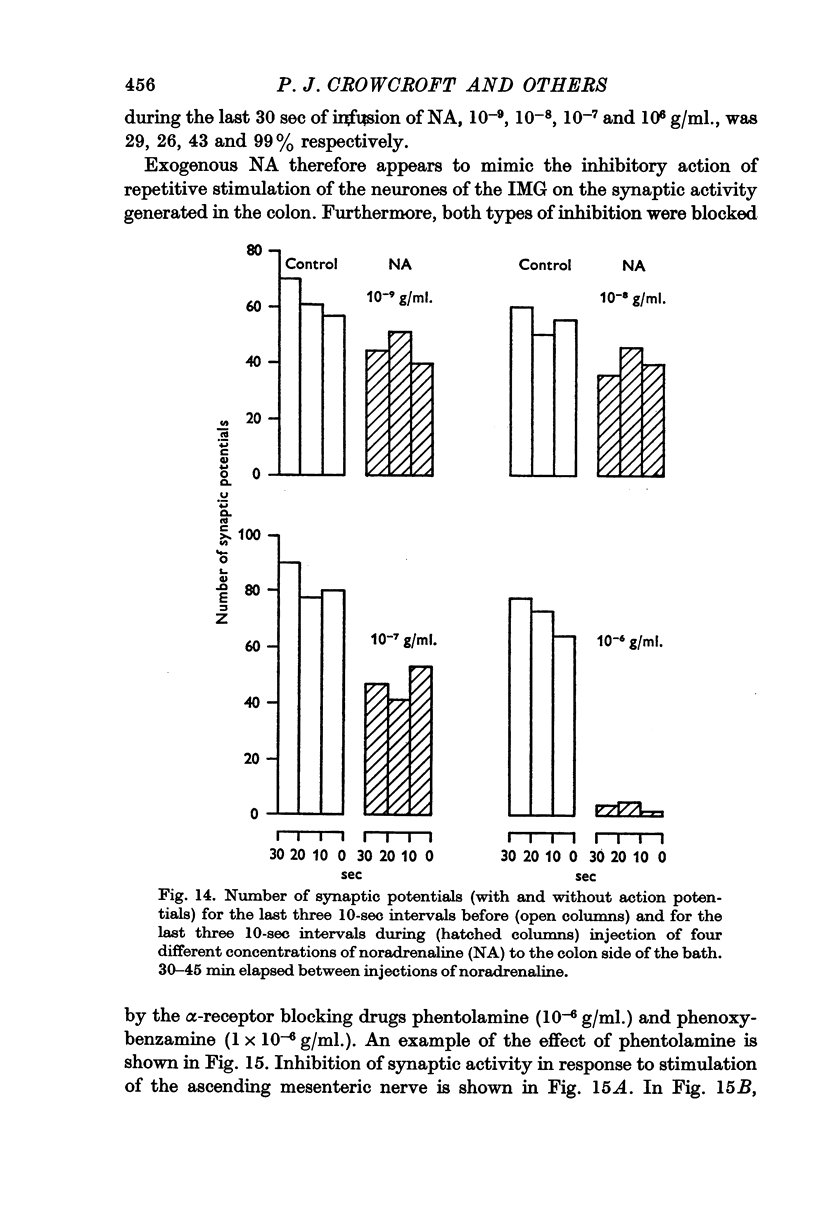

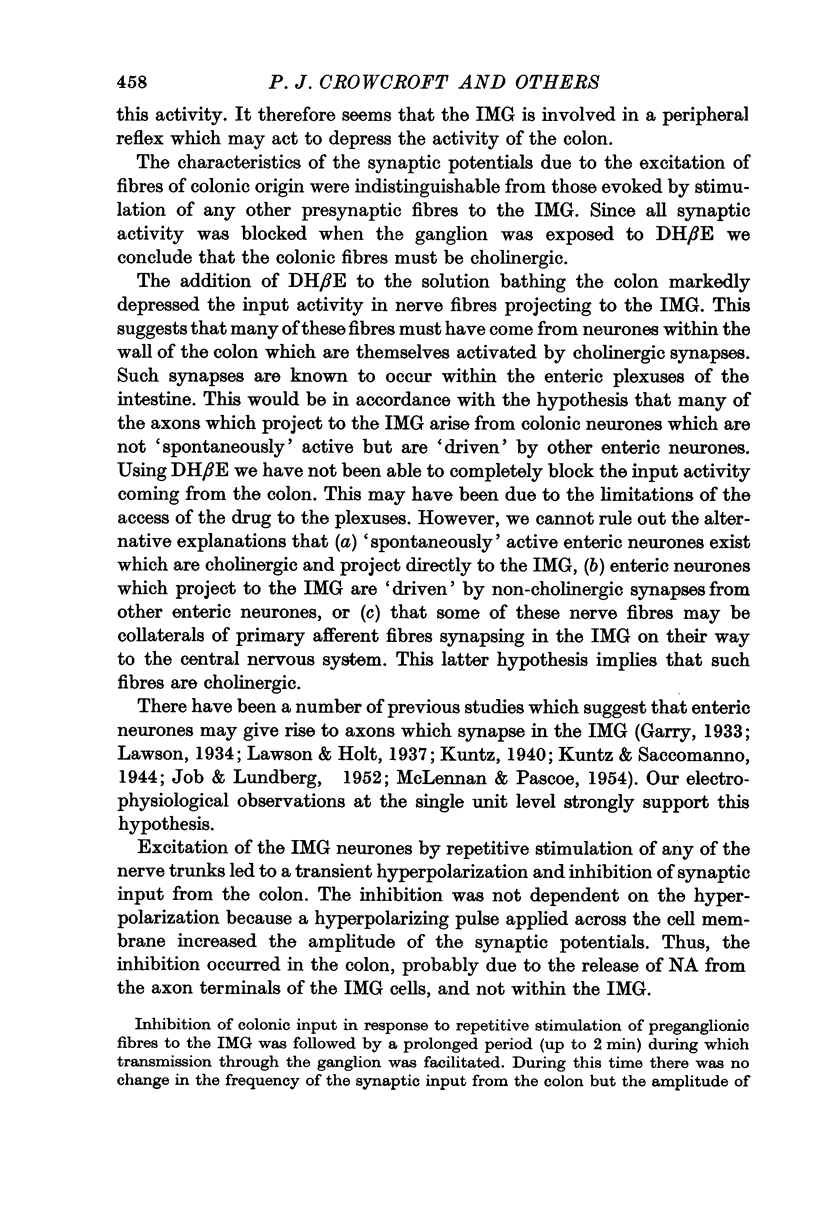
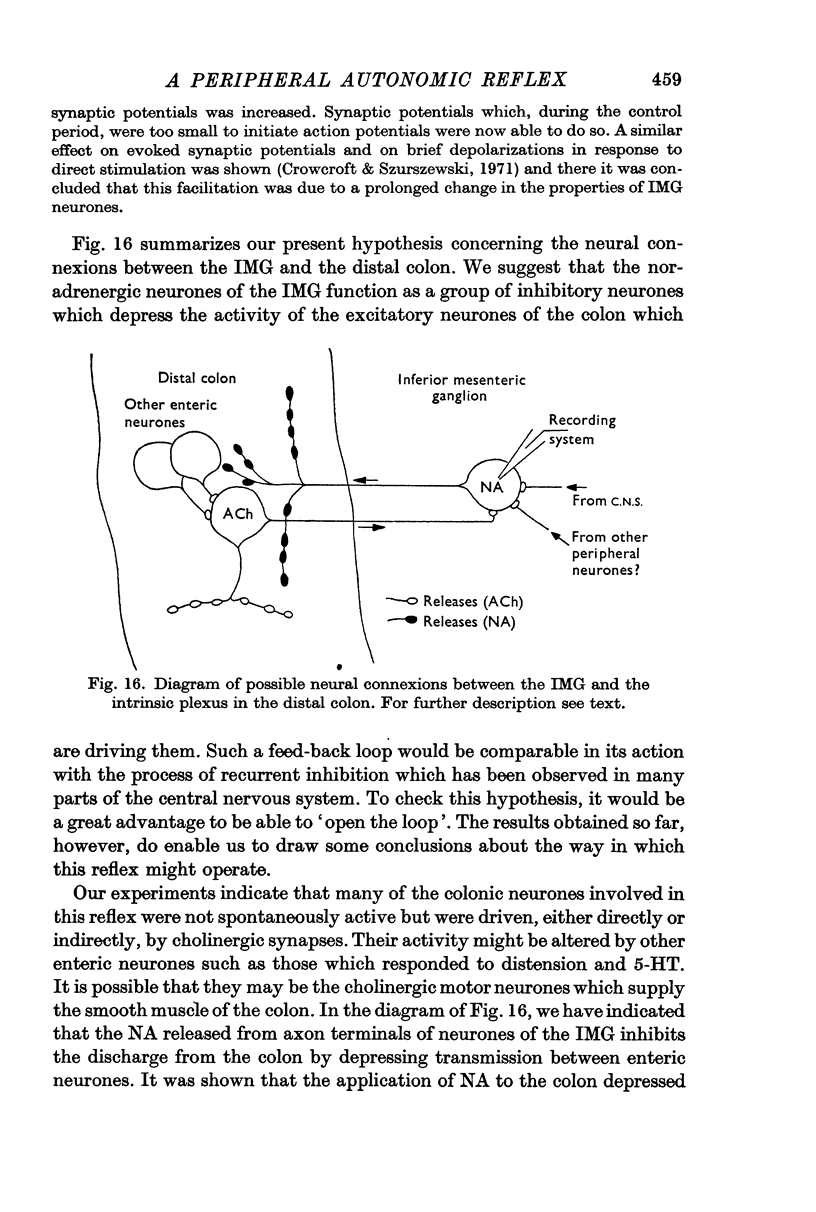

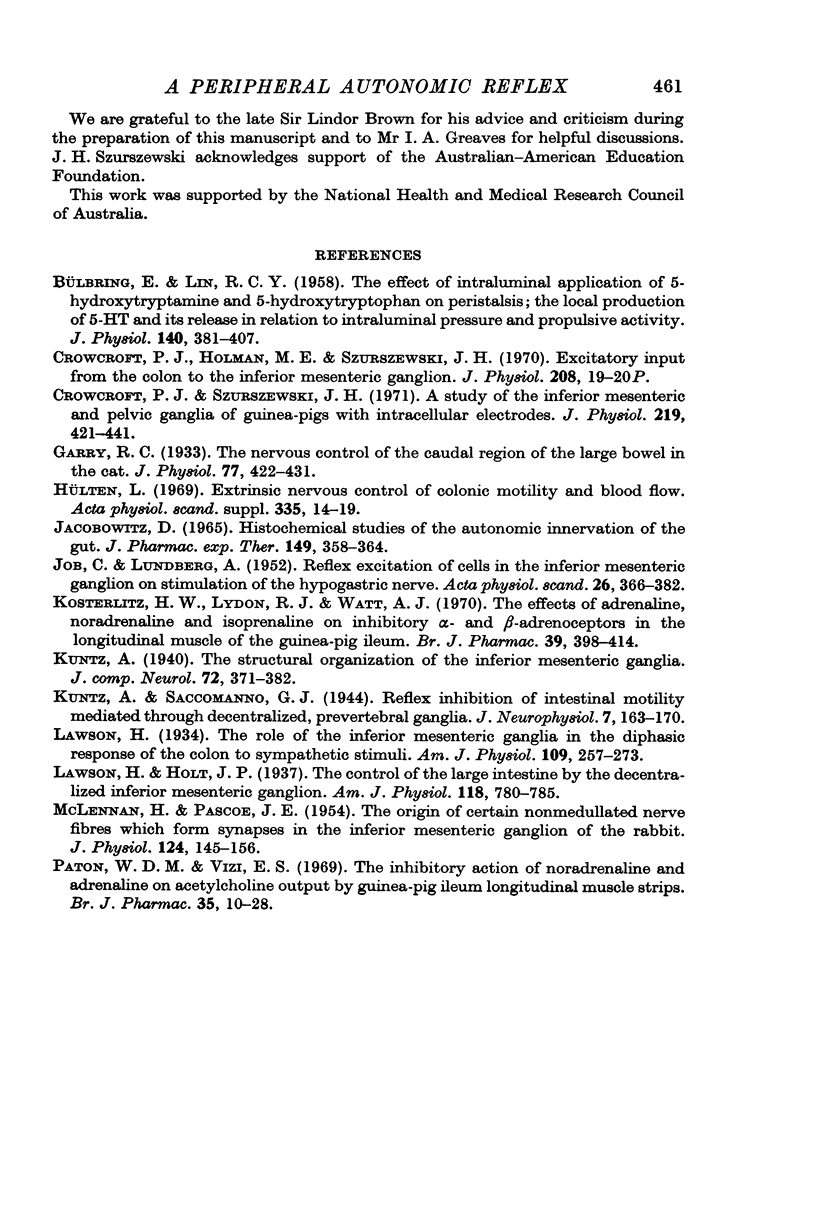
Selected References
These references are in PubMed. This may not be the complete list of references from this article.
- BULBRING E., LIN R. C. The effect of intraluminal application of 5-hydroxytryptamine and 5-hydroxytryptophan on peristalsis; the local production of 5-HT and its release in relation to intraluminal pressure and propulsive activity. J Physiol. 1958 Mar 11;140(3):381–407. [PMC free article] [PubMed] [Google Scholar]
- Crowcroft P. J., Szurszewski J. H. A study of the inferior mesenteric and pelvic ganglia of guinea-pigs with intracellular electrodes. J Physiol. 1971 Dec;219(2):421–441. doi: 10.1113/jphysiol.1971.sp009670. [DOI] [PMC free article] [PubMed] [Google Scholar]
- Garry R. C. The nervous control of the caudal region of the large bowel in the cat. J Physiol. 1933 Mar 15;77(4):422–431. doi: 10.1113/jphysiol.1933.sp002977. [DOI] [PMC free article] [PubMed] [Google Scholar]
- JOB C., LUNDBERG A. Reflex excitation of cells in the inferior mesenteric ganglion on stimulation of the hypogastric nerve. Acta Physiol Scand. 1952;26(4):366–382. doi: 10.1111/j.1748-1716.1952.tb00918.x. [DOI] [PubMed] [Google Scholar]
- Jacobowitz D. Histochemical studies of the autonomic innervation of the gut. J Pharmacol Exp Ther. 1965 Sep;149(3):358–364. [PubMed] [Google Scholar]
- Kosterlitz H. W., Lydon R. J., Watt A. J. The effects of adrenaline, noradrenaline and isoprenaline on inhibitory alpha- and beta-adrenoceptors in the longitudinal muscle of the guinea-pig ileum. Br J Pharmacol. 1970 Jun;39(2):398–413. doi: 10.1111/j.1476-5381.1970.tb12903.x. [DOI] [PMC free article] [PubMed] [Google Scholar]
- McLENNAN H., PASCOE J. E. The origin of certain non-medullated nerve fibres which form synapses in the inferior mesenteric ganglion of the rabbit. J Physiol. 1954 Apr 28;124(1):145–156. doi: 10.1113/jphysiol.1954.sp005093. [DOI] [PMC free article] [PubMed] [Google Scholar]
- Paton W. D., Vizi E. S. The inhibitory action of noradrenaline and adrenaline on acetylcholine output by guinea-pig ileum longitudinal muscle strip. Br J Pharmacol. 1969 Jan;35(1):10–28. doi: 10.1111/j.1476-5381.1969.tb07964.x. [DOI] [PMC free article] [PubMed] [Google Scholar]


